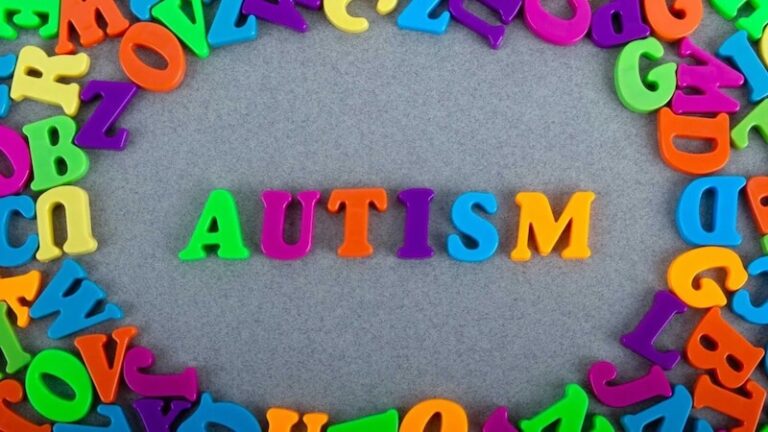What causes autism?
Receiving a diagnosis of autism can be paralyzing and frustrating for any family. The search for answers is inherent, and many parents and family members may wonder: what causes autism? However, it is crucial to keep in mind that experts are still studying it.
Autism is not an unusual disorder; in fact, the Centers for Disease Control and Prevention (CDC) states that 1 in 36 children in the United States has autism spectrum disorder. In addition, studies have revealed that this disorder manifests in all races, ethnicities, and socioeconomic groups. Although it is four times more common in boys, it is essential to note that there is also a significant percentage of autistic girls.
In this journey toward understanding neurodiversity, it is essential to know that you are not alone. ABA Centers of America is here to provide support to neurodiverse families in Massachusetts and New Hampshire. In this guide, we will approach the causes, symptoms, and treatments of autism, providing you with valuable information to accompany you on this journey.
Autism Causes and Symptoms
People who experience Autism Spectrum Disorder (ASD) face challenges in communication and social interaction, with repetitive behaviors and limited interests, which can complicate their performance in areas such as school and work, as well as in other environments. The causes of autism continue to be studied by neurologists and neuropsychologists, who have identified connections between this disorder and genetic, biological, and environmental factors or the combination of various elements.
Understanding Genetic Risk in Autism
Advances in research into the genetic causes of autism have led to the identification of specific alleles that contribute to ASD. A National Center for Biotechnology Information (NCBI) study indicates that the risk of a child developing autism if they have a sibling with the condition ranges from 2% to 8% but rises to 12% to 20% if the sibling has difficulties in one or two of the three affected aspects of autism (deficient communication, hindered reciprocal social engagement, and limited, repetitive, and stereotypical behavior or interests).
Additionally, several twin studies support the idea that identical twins have higher similarity rates than non-identical twins for several disorders, including ASD, suggesting specific genetic factors.
In relation to inheritance in families where only one member is in the spectrum compared to those with several affected, scientists have observed that new chromosomal alterations are more frequent in families with only one affected member, which is consistent with a high incidence of new mutations in these cases. In addition, researchers found that the presence of autistic traits in undiagnosed relatives tends to be more common in families with more than one person in the spectrum, indicating the existence of different forms of genetic transmission of autism in the population.
Delving into Biological Causes
The same NCBI study suggests that autism may be the result of various genetic alterations that primarily affect specific biological pathways related to brain development and plasticity.
To explain this more comprehensibly, some specific genetic disorders, such as Rett syndrome or Fragile X syndrome, as well as chromosomal abnormalities, such as the 15ql1-ql3 duplication of the maternal allele (linked to Autism Spectrum Disorder – ASD), affect the brain’s ability to adapt and change, known as synaptic plasticity. In addition, the first mutations identified in people with autism not associated with known causes involve genes related to synaptic connections, such as NLGN3, NLGN4X, and SHANK3.
Advances in genetic analysis techniques, such as whole genome screening, have revealed that structural variations in genes contribute significantly to autism. The identification of copy number changes (CNV) at increasingly detailed resolution has consistently confirmed the importance of synaptic function in autism. Additional studies have demonstrated copy number changes in the NLGN-NRXN-SHANK pathway and other synaptic genes, such as SynGAP and DLGAP2, supporting the idea that alterations in brain cell communication may be a crucial cause of autism.
Exploring Environmental Elements
The National Institute of Environmental Health Sciences found a connection between autism and the interaction between genetic and environmental factors. According to their studies, exposure of pregnant women to harmful pollutants may increase the risk of genetic mutations linked to autism.
Environmental elements associated with autism comprise events that happen both before and during birth, including:
- Older age of parents during conception
- Exposure to air pollution or specific pesticides during pregnancy
- Maternal obesity, diabetes, or disorders of the immune system
- Severe prematurity or inadequate birth weight
- Birth complications that may cause periods of oxygen deprivation to the baby’s brain
It is important to note that these factors, by themselves, do not cause autism. However, research indicates that when combined with genetic factors, they can increase the risk of a child developing autism.
Receiving a Diagnosis of Autism: What Are The Symptoms?
Although the causes of autism continue to be the subject of study and research, physicians specializing in this field have identified common symptoms that constitute fundamental criteria for establishing a diagnosis. These symptoms are often evident even in children as young as 18 months.
According to the CDC, symptoms of autism in children include:
Communication and Interaction Difficulties:
- Lack of or avoidance of eye contact
- Failure to respond to name by nine months
- Lack of facial expressions by nine months
- Does not engage in simple interactive play by 12 months
- Limited use of gestures, such as waving goodbye, by 12 months
- Not sharing interests with others, such as showing toys he likes, by 15 months
- Not pointing to things of interest to communicate with others by 18 months
- Does not notice other’s emotions by 24 months
- Lack of interest in playing with other children by 36 months
- Does not engage in pretend play by 48 months
- Does not sing, dance, or act for others by 60 months
Restrictive or Repetitive Interests and Behaviors:
- Deep interest in lining up toys and objects, with frustration when this order is disturbed
- Echolalia or repetition of words and phrases
- Playing with toys in the same way, constantly
- Focus on specific parts of objects
- Obsessive interests
- Need to follow routines
- Difficulty handling change
- Repetitive movements such as spinning in circles, waving hands, or rocking the body
- Unusual reactions to certain sounds, smells, people, and textures
Other Characteristics:
- Delay in language skills
- Delayed motor skills
- Delay in learning and cognitive skills
- Hyperactivity, impulsivity, and distractibility
- Epilepsy and seizure disorder
- Unusual eating and sleeping habits
- Gastrointestinal problems
- Distinctive moods and emotional reactions
- Anxiety, stress, and excessive worry
- Lack of fear or, on the contrary, more fear than expected
Is There an Autism Treatment?
Although there is no definitive cure for autism, brain development specialists have explored various educational approaches and behavioral interventions to promote progress for individuals on the spectrum. These approaches focus primarily on the development of social and language skills.
Applied Behavior Analysis (ABA) Therapy has been the subject of study for over four decades, and the medical community has recognized it as the gold standard in the treatment of autism. Beneficial for children, adolescents, and adults on the spectrum, ABA therapy has demonstrated positive results in several key areas, including:
- Improved learning of critical life skills
- Fostering independence
- Teaching alternatives to problem behaviors
- Developing coping mechanisms for stressful situations
- Enhancing individual strengths
- Development of social and communication skills
- Preparing for critical transitions, such as school, adolescence, and adulthood
These are just a few of the benefits people gain from participating in ABA therapy. ABA therapists personalize this approach, working together with the families to set realistic goals, tailoring them to the specific needs and context of each individual on the spectrum.
Applied behavior analysis is considered a comprehensive treatment, but it can also complement other forms of therapy for autism, such as occupational, physical, and speech therapy. It is important to note that, although there are no medications that “cure” autism, many individuals on the spectrum face additional problems, such as anxiety, obsessive-compulsive disorder, attention deficit, or depression, which medical specialists can treat and prescribe medications to assist them.
More About ABA Therapy with ABA Centers of America
Although living with neurodiversity can present additional challenges and complexities, individuals and their families can find help and support to facilitate their participation and functioning in society.
Early intervention has opened a range of possibilities that enable children on the spectrum to achieve long-term success and, in many cases, independence. At ABA Centers of America, we offer autism diagnostic and early intervention services, providing our clients access without the tedious waiting lists as we work daily to ensure timely access to autism care.
In addition, our ABA therapy plans are custom-designed by experts in the field, who, in collaboration with families, establish program goals. To get more information about our autism services in Massachusetts and New Hampshire and to schedule a free consultation, call us at (844) 923- 4222 or contact us online. With the proper support, children with autism have the potential to flourish and achieve their dreams.







